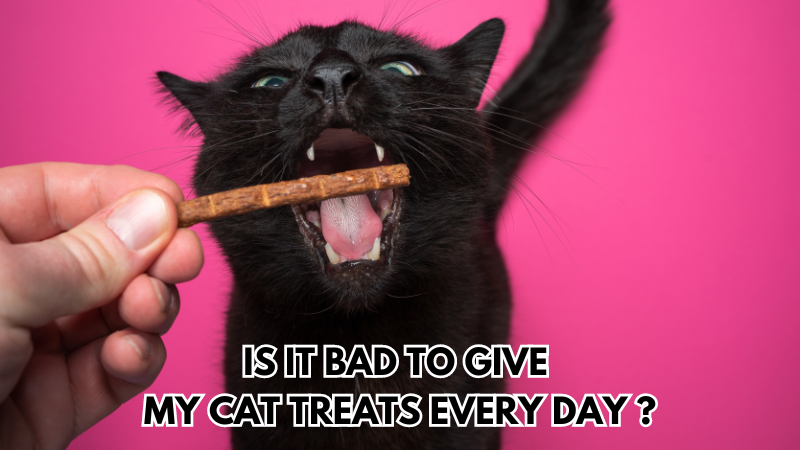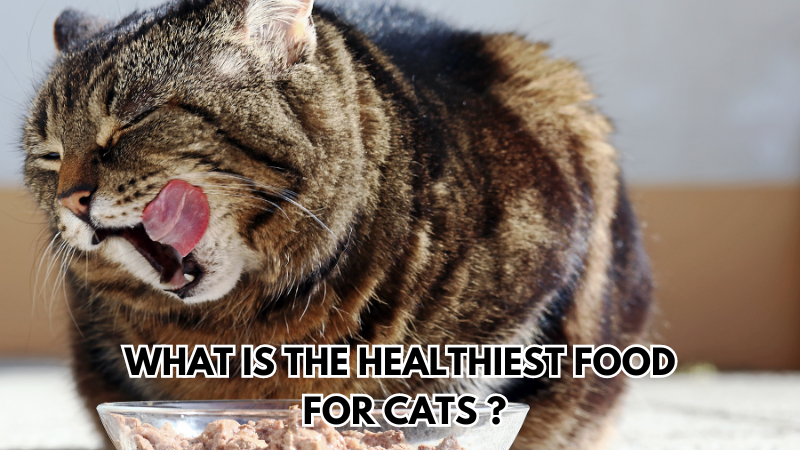While we often talk about overweight pets, the opposite can be just as concerning. Are your cat underweight ? How can you tell if she’s too skinny?
Cats come in all shapes and sizes, making it tricky to know what’s normal and what’s not. If you’re wondering whether your cat is just lean or truly underweight, this article will help you figure it out.
Let’s dig into the signs, causes, and solutions for an underweight kitty in easy, bite-sized pieces. Trust me, it’s not as complicated as it might seem.
- The Healthy Weight
- How to Check if Your Cat is Underweight
- The Body Condition Score (BCS)
- Causes of an Underweight Cat
- Solutions to Help Your Cat Gain Weight
- When to Be Concerned
- Bonus Tip
Is My Cat Underweight ? – The Healthy Weight
Before worrying about your cat’s weight, it’s important to know what “normal” even means. Most domestic cats should weigh between 8 to 10 pounds.
However, factors like breed, age, and activity level can change what’s normal for your feline friend.
For example, a healthy Siamese cat might weigh less than 8 pounds, while a Maine Coon could weigh up to 25 pounds and still be perfectly fine.
Don’t stress if your cat doesn’t fit into the “average” category. Instead, focus on their body condition.
This is where the Body Condition Score (BCS) comes into play. It’s a tool that helps you evaluate your cat’s weight by feel rather than just looking at numbers on a scale.
How to Check if Your Cat is Underweight
So, how do you know if your cat is too skinny? You don’t need any special tools, just your hands and eyes.
Here’s a quick test:
- Feel their ribs. Run your hands along your cat’s sides. You should be able to feel their ribs, but not see them. If the ribs are too pronounced or visible, this could be a sign of underweight.
- Look at their waist. When you look down at your cat from above, do they have an obvious waistline? While some waist definition is normal, a dramatic inward curve can indicate your cat is underweight.
- Examine their spine. Can you easily feel or see their spine and hip bones? This is another red flag that your cat may be too thin.
Trusted Tip: The Cornell Feline Health Center recommends paying attention to your cat’s coat as well. If it starts looking dull or patchy, this might indicate an underlying health issue affecting their weight .

The Body Condition Score (BCS)
The Body Condition Score (BCS) is a standardized system used by veterinarians to assess the body fat and overall weight of pets, including cats.
It’s a hands-on, visual method that helps determine whether your cat is underweight, overweight, or at an ideal weight.
The BCS typically ranges from 1 to 9, with 1 being severely underweight and 9 representing obesity. Here’s a breakdown of what each score means:
- BCS 1 (Severely Underweight): Visible ribs, spine, and hip bones. No fat. The cat looks emaciated.
- BCS 2 (Underweight): Ribs and bones are easily felt and visible. The cat looks very thin.
- BCS 3 (Thin): The ribs are easy to feel, but there’s a slight fat layer. The waist is defined, and the abdomen is tucked.
- BCS 4 (Slightly Underweight): Ribs are felt with some fat covering. Waist is noticeable but not overly pronounced.
- BCS 5 (Ideal): The ribs are easily felt but not seen, with a slight waist and a flat belly.
- BCS 6 (Slightly Overweight): The ribs are harder to feel. The waist is barely noticeable, and the belly is slightly rounded.
- BCS 7 (Overweight): Ribs are difficult to feel under a layer of fat. There’s no waist, and the belly is visibly round.
- BCS 8 (Obese): The ribs are impossible to feel. No waist. The back is broad, and the abdomen is heavy and sagging.
- BCS 9 (Severely Obese): Extremely broad back, thick fat, and a heavily sagging belly with an obvious fat pad.

How to Use BCS for Your Cat
- Feel their ribs: Run your hands along their sides. In an ideal-weight cat, you should be able to feel the ribs easily under a light fat layer. If you can’t feel them, your cat may be overweight. If the ribs are too prominent, they might be underweight.
- Look at their waist: When viewed from above, a healthy cat will have a defined waistline that’s narrower than their chest. If the waist is missing or exaggerated, it’s a sign of either overweight or underweight.
- Check the abdomen: Look at your cat from the side. A slight upward tuck in the belly behind the ribs is normal. A sagging belly may indicate excess weight, while an overly tucked stomach might mean your cat is underweight.
Why Is BCS Important?
The BCS provides a more accurate assessment of your cat’s health than just looking at their weight on a scale because it accounts for muscle mass and fat distribution.
A cat with a higher or lower score on the BCS may need adjustments to their diet, exercise, or medical attention.
Regularly checking your cat’s BCS helps catch weight problems early, allowing for timely interventions to keep your pet healthy.
If you’re unsure about your cat’s score, your vet can help you evaluate it and offer advice on keeping them in the ideal range.
Causes of an Underweight Cat
If you think your cat is underweight, don’t panic. There could be several reasons for their slim figure. Some of the most common causes include:
Parasites
Internal parasites like worms can steal nutrients from your cat, causing them to lose weight despite eating well. It’s a sneaky but common culprit. Your vet can easily check for parasites and treat them if necessary.
Dental Problems
Does your cat have bad breath or seem to struggle while eating? Dental pain could make your cat eat less, leading to weight loss. Even though they’re eating, it might not be enough to maintain a healthy weight.
Age
Senior cats naturally tend to lose muscle mass as they age. However, if the weight loss seems too sudden or drastic, it’s worth investigating. Cats over 12 are especially prone to conditions like hyperthyroidism, which can cause weight loss even when they’re eating well .
Stress
Cats are sensitive creatures, and changes in their environment—like moving to a new home, adding another pet, or even a change in your routine—can cause stress, leading to reduced appetite and weight loss. If your cat seems anxious or unusually withdrawn, stress could be to blame.
Chronic Illness
Some illnesses, such as kidney disease or diabetes, can lead to weight loss. If your cat is underweight and has other symptoms like increased thirst, vomiting, or lethargy, a trip to the vet is a must.
Practical Solutions to Help Your Cat Gain Weight
Now that you’ve identified the potential reasons for your cat’s low weight, it’s time to help them get back to a healthy size. Here’s how:
Visit the Vet
Always start with a vet visit if you’re worried about your cat’s weight. They can run tests to rule out underlying conditions, from parasites to hyperthyroidism.
Adjust Their Diet
Try feeding your cat a more calorie-dense food or adding wet food to their diet. Wet food can be more appealing and easier to digest, especially if your cat has dental issues. Ask your vet if you should switch to a high-calorie, vet-prescribed diet to help them gain weight safely .
Increase Feeding Frequency
Instead of feeding your cat twice a day, try offering smaller, more frequent meals. This can help stimulate their appetite, especially if they seem to lose interest in their food quickly.
Create a Stress-Free Environment
If stress is the problem, you’ll need to make your cat feel secure again. Provide a quiet, safe space for them to eat and rest. Use pheromone diffusers like Feliway, which can help reduce anxiety in cats. Also, stick to a regular routine to make your cat feel more comfortable.
Engage Them in Play
While it may seem counterintuitive, play can stimulate a cat’s appetite. Interactive play helps reduce stress and encourages your cat to eat more. A happy, active cat is more likely to eat well and maintain a healthy weight.

When to Be Concerned
It’s essential to monitor your cat’s weight closely. If they lose more than 10% of their body weight within a few weeks, it’s time to get them checked by a vet.
Even a slight dip in weight can be a sign of a larger problem.
Keep a record of their weight and note any changes in their behavior or eating habits.
Bonus Tip: Tasty Treats That Can Help
One way to encourage your cat to gain weight is by offering high-calorie treats. However, make sure they’re healthy and won’t cause any stomach upset.
You can try adding a little bit of unseasoned cooked chicken, tuna, or scrambled eggs into their food. Some cats also love pumpkin or plain yogurt, which can add extra calories while being gentle on their stomachs.
Read: How Do I Know If My Cat’s Food Is Good And High Quality?
If you think your cat is underweight, don’t ignore it. By keeping an eye on their body condition, adjusting their diet, and creating a stress-free environment, you can help your feline friend reach and maintain a healthy weight.
Remember, each cat is unique, and what works for one may not work for another, so it’s always best to consult your vet when in doubt.
At the end of the day, helping your cat gain weight isn’t just about food—it’s about ensuring they’re happy and healthy overall. A well-cared-for cat is a happy cat! ***
Watch Videos about Cat & Kitten Care on Youtube @naowthecat